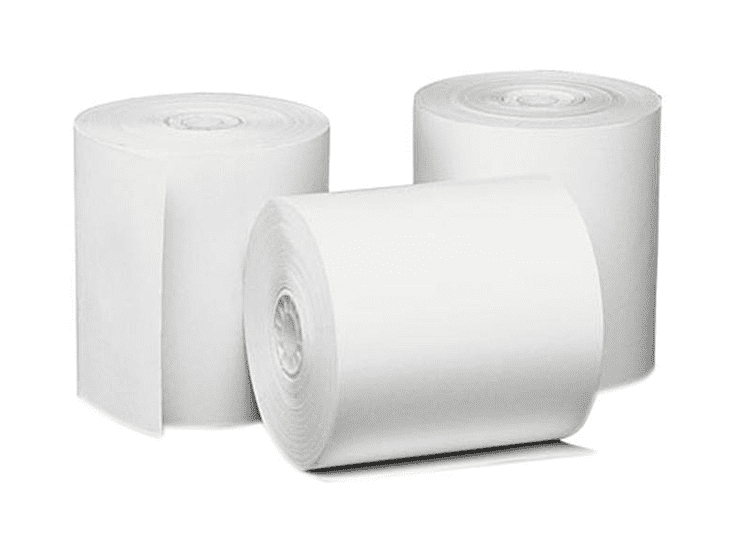Thermal Printer Paper: Trends Shaping Their Future in Retail
- Raghav jain
- Dec 16, 2024
- 4 min read

The retail industry is witnessing a transformation with evolving technology and consumer expectations. Among the critical elements driving efficiency is thermal printer paper, a cornerstone in billing, ticketing, and labeling. Thermal printer paper has become indispensable in creating seamless and speedy customer experiences. This article explores key trends shaping its future, highlighting innovations, sustainability, and applications.
The Role of Thermal Printer Paper in Retail
Thermal printer paper is specially coated to produce images when exposed to heat. It eliminates the need for ink or toner, offering efficiency and reducing operational costs. Widely used in receipt printing, barcode labels, and tickets, it supports diverse retail processes. Its compatibility with various devices ensures adaptability for small businesses to large-scale retail chains.
Trends Shaping the Future of Thermal Printer Paper
1. Sustainability and Eco-Friendly Options
Environmental awareness is influencing the manufacturing and consumption of thermal printer paper. Retailers are leaning toward eco-friendly alternatives with recyclable and biodegradable coatings. Manufacturers now offer BPA-free and phenol-free thermal paper, aligning with health and safety regulations.
Eco-conscious customers also value brands prioritizing green operations. Retailers adopting sustainable thermal printer paper can enhance brand loyalty and reduce environmental impact, addressing long-term sustainability goals.
2. Customizable Solutions for Branding
Thermal printer paper has evolved from mere transaction records to marketing tools. Businesses utilize customizable receipts with logos, promotional offers, and QR codes, enabling personalized customer engagement.
Custom thermal paper is gaining popularity for enhancing brand visibility. For example, specialty stores can print vibrant store logos, while cafes can print loyalty rewards to encourage repeat visits, turning receipts into a branding asset.
3. Enhanced Durability for Long-Term Use
Durable thermal printer paper is becoming increasingly essential for retail, particularly for applications like warranty cards, archival records, and long-lasting labels. Manufacturers are developing advanced coatings resistant to fading, smudging, and moisture.
This durability ensures that printed information remains intact over time, meeting retail needs that require documentation to be preserved for years. Enhanced durability also reduces replacement costs and boosts operational efficiency.
4. IoT and Smart Retail Integration
The rise of Internet of Things (IoT) technology is shaping the retail landscape. Thermal printers connected with IoT devices streamline inventory management and real-time data tracking. High-quality thermal printer paper is a critical component for producing precise, scannable barcodes.
IoT-enabled retail setups, combined with thermal printing, allow for instant stock updates, better accuracy, and faster checkout processes. As retailers adopt this technology, demand for innovative thermal paper solutions will continue to grow.
5. Compact and Portable Thermal Printers
Retail is increasingly moving beyond traditional counters, leading to the rise of compact and portable thermal printers. Food trucks, pop-up stores, and on-the-go services rely on thermal printers for receipts and labels. Compact thermal printer paper rolls are vital to meet the specific needs of these setups, emphasizing adaptability and mobility.
Manufacturers are offering lightweight and compact thermal paper designed for portable printers, expanding its applications for retail in unconventional settings.
6. Cost-Effective Bulk Options
Retailers constantly strive to optimize costs without compromising quality. Bulk purchasing of thermal printer paper not only reduces costs but also minimizes disruptions caused by shortages. Suppliers are offering flexible purchase options tailored to different scales, ensuring businesses have uninterrupted access to quality paper.
Online platforms allow retailers to compare prices, quality, and customer reviews, helping them make informed choices. The cost-effectiveness of thermal paper continues to be a key driver of its adoption in retail settings.
7. Thermal Paper for Omnichannel Retailing
Omnichannel retailing integrates in-store, online, and mobile shopping experiences. Thermal printer paper plays a pivotal role in providing unified communication, such as printing invoices for online orders fulfilled in-store or issuing returns receipts.
Specialized thermal papers that align with digital formats ensure consistency in branding and data. By bridging digital and physical commerce, thermal printer paper reinforces its relevance in a multichannel retail world.
Innovations in Thermal Printer Paper Manufacturing
Thermal printer paper manufacturers are pushing boundaries to meet evolving retail demands. Key innovations include:
Dual-sided printing: Allows retailers to print information on both sides, maximizing efficiency and reducing waste.
Specialized coatings: New formulations resist heat, moisture, and UV damage, ensuring durability in varying conditions.
Anti-counterfeit features: High-security paper with embedded watermarks or tamper-proof designs for sensitive printing applications like tickets or invoices.
These advancements are geared toward improving functionality, meeting regulations, and addressing emerging retail needs.
How Retailers Can Adapt to These Trends
To remain competitive, retailers must embrace these trends and adapt their practices. Key strategies include:
Opting for Sustainable Supplies: Switching to eco-friendly thermal printer paper options and communicating the effort to customers.
Collaborating with Reliable Suppliers: Partnering with trusted suppliers offering high-quality, customizable, and durable thermal paper.
Staying Tech-Savvy: Investing in IoT-compatible thermal printers and ensuring seamless integration with modern systems.
Retailers who align their printing solutions with these trends will not only save costs but also elevate customer satisfaction and align with broader environmental objectives.
Conclusion
The future of thermal printer paper in retail is marked by sustainability, innovation, and adaptability to evolving technologies. By staying ahead of these trends, retailers can improve their operations, elevate their branding, and align with consumer expectations. As the industry shifts towards eco-friendly, customizable, and durable solutions, thermal printer paper remains a vital asset driving the retail experience into a future of efficiency and innovation.
4o



Comments